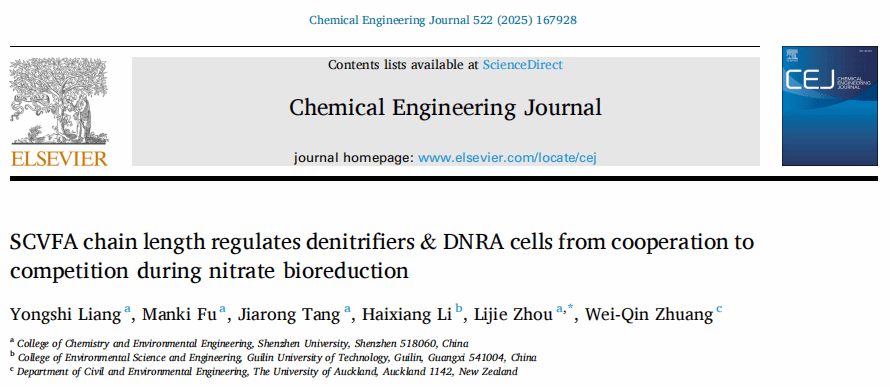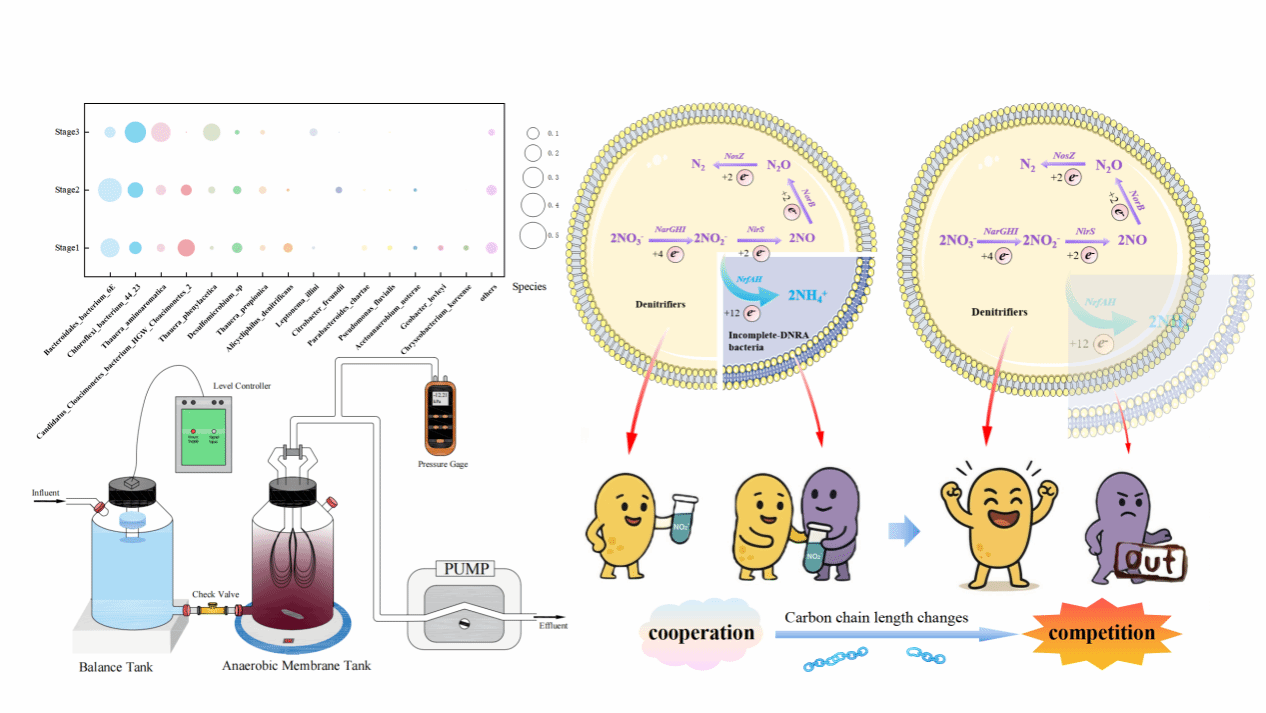Recently, the research team led by Associate Professor Zhou Lijie from the College of Chemistry and Environmental Engineering at Shenzhen University published a research article entitled “SCVFA Chain Length Regulates Denitrifiers & DNRA Cells from Cooperation to Competition during Nitrate Bioreduction” in Chemical Engineering Journal (Impact Factor: 13.2; SCI Q1; Top-tier Journal). Associate Professor Zhou Lijie serves as the sole corresponding author of the paper, and Master’s student Liang Yongshi is the first author. Shenzhen University is designated as both the first-author affiliation and the corresponding institution.

Short-chain volatile fatty acids (SCVFAs) are an efficient and environmentally friendly class of carbon sources for biological denitrification processes, as they can be rapidly and readily metabolized by heterotrophic bacteria. However, the influence of SCVFA chain length on microbial interactions and nitrogen reduction pathways remains unclear. In this study, heterotrophic denitrification systems were constructed using acetate, propionate, and butyrate as the sole electron donors and carbon sources, with sodium nitrate as the sole electron acceptor at a fixed C/N ratio of 4:1. Under all conditions, nitrate removal efficiency exceeded 95%. Nevertheless, ammonium accumulation of up to 40 mg/L was detected in the propionate and butyrate groups, indicating substantial dissimilatory nitrate reduction to ammonium (DNRA) activity. Metagenomic and functional gene annotation analyses revealed that DNRA-associated communities accounted for more than 70% of the population under propionate and butyrate conditions. Notably, the abundance of partially functional DNRA bacteria lacking nitrate reductase (e.g., strains related to Bacteroidales bacterium 6E MAG) was even higher than that of fully functional DNRA bacteria. These findings suggest that partially functional DNRA bacteria may rely on nitrite supplied by denitrifiers, adopting a food chain-like survival strategy. However, this form of cross-feeding was sustained only when electron donor utilization efficiency was relatively low. As the SCVFA chain length decreased, the abundance of partially functional DNRA bacteria declined, and denitrifiers gradually became dominant. Pearson correlation analysis confirmed this ecological shift, which was accompanied by a marked improvement in electron utilization efficiency: butyrate (43.71%) < propionate (47.18%) < acetate (55.69%). This study demonstrates that carbon source composition and electron utilization efficiency are key factors regulating the complex metabolic interactions between DNRA and denitrifying bacteria, thereby shaping nitrogen cycling pathways. It further highlights the critical role of SCVFA chain length in modulating microbial interactions and nitrogen transformation processes, providing theoretical support for optimizing carbon source selection and improving denitrification performance in engineering applications.

Original link: https://doi.org/10.1016/j.cej.2025.167928
